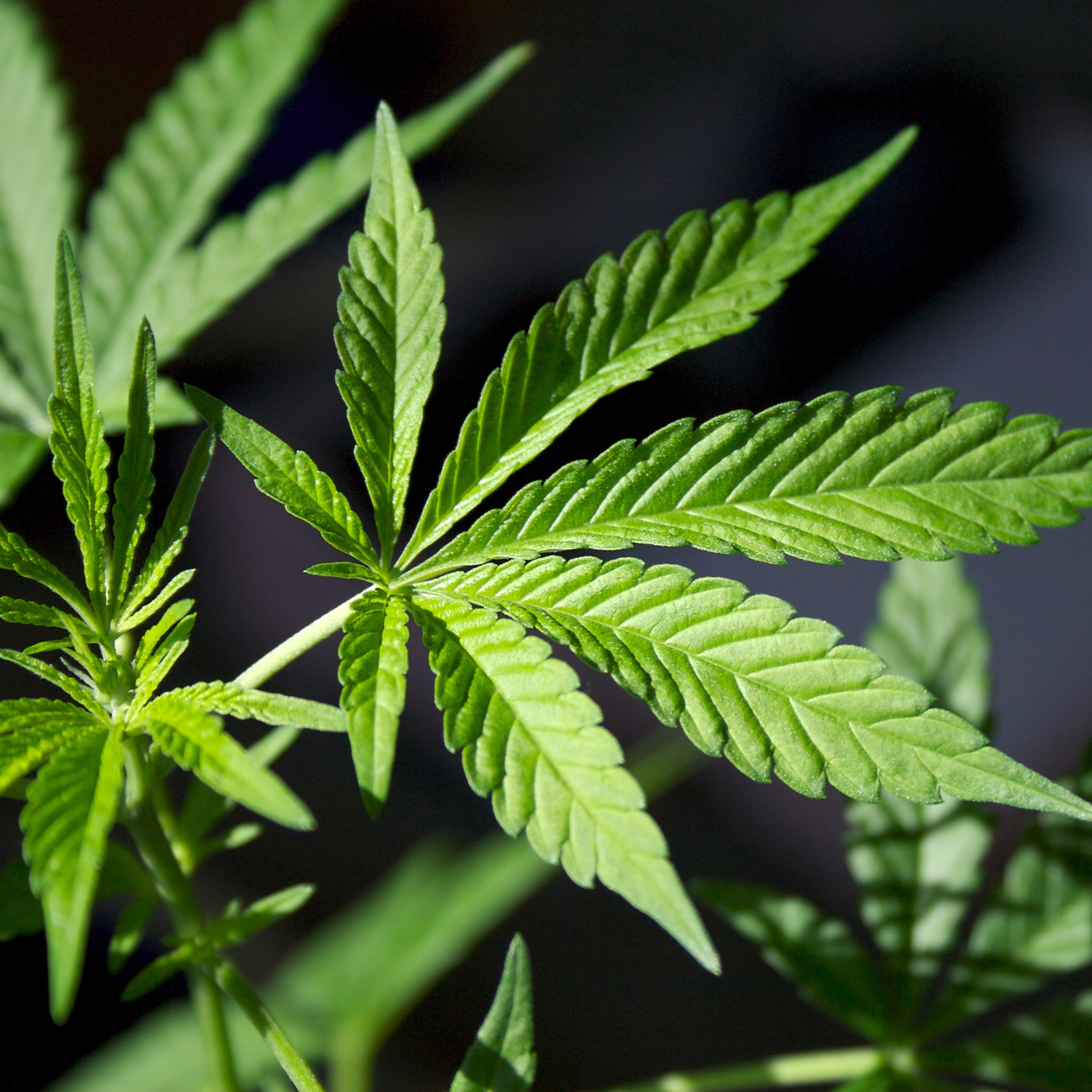Can the new Farm Bill regarding hemp-based products affect Urine Drug Screen Results?
Cannabidiol (CBD) is a product that can be extracted from cannabis plants including marijuana and hemp. When extracted from marijuana, it may also have high levels of delta-9-tetrahydrocannabinol (THC) which is a chemical that gives the user a “high” sensation. However, when CBD alone is extracted from hemp, there are much lower levels of THC present. There are many different types of extraction methods including extraction with ethanol, hydrocarbon extraction, and soundwaves (sonic and ultrasonic). Early this year, President Trump signed the latest 2018 Farm Bill which legalized the production of and commercial farming of hemp in the United States of America.1,2 Previously, hemp, which is a type of cannabis plant, was listed as a schedule I controlled substance due to its similarity to marijuana. However, under the new law, production of hemp is legal as long as the plant does not contain higher than 0.3% THC.1,2 There are several different types of hemp products. They have been used for various reasons with many different routes of administration such as inhaled, topical application, and edible products. While hemp products under the new farm bill are supposed to contain less than 0.3% THC, natural OTC products are largely unregulated with limited testing on purity of products. Therefore, OTC hemp products may contain higher concentrations of THC than the law allows. With this new law, a lingering question is whether or not hemp-based products can cause an unexpected positive in drug screen for THC, and if so, how much of a hemp product can you take while also avoiding a positive THC drug screen. Herbal products are not regulated, which allows a multitude of variabilities to occur. With lack of testing and standards on all over-the-counter products, they may contain more than 0.3% THC, irrespective of the new farm bill passage. Therefore, these lingering questions about urine drug screens do not have a definitive answer.
How much THC in your system does it really take to show up on a drug screen?
There are many different ways to test for drug use including urine, blood, saliva, sweat, and nails.3 For ease of testing and reliability, urine tests are often used. Typically for urine drug screens, immunoassay testing is the most common and least expensive, which has moderate selectivity but lower sensitivity which can often result in false positives and negatives. These tests are quick and can be resulted rapidly in a medical office setting at the time of prescribing. Because of their lower sensitivity, positive immunoassay screens can be sent out for a confirmatory gas or liquid chromatography-mass spectrometry (GC-MS) for definitive results.3 When using immunoassay, the most common concentration cutoff to reduce the chance for false positives is 50 ng/mL.3 This cutoff was established by the Department of Health and Human Services specifically for workplace testing. For confirmatory positive results that undergo GC-MS, the urine level cut-off is 15 ng/mL, since this test is more sensitive and more specific for the THC metabolite 11-nor-delta-9-tetrahydrocannabinol-9-carboxylic acid (9-carboxy-THC).3 While this is the gold standard for workplace testing, other institutions may have different cutoffs for positive tests and policies regarding the matter.
How much hemp, and for how long will it test positive?
In order to answer this question, we must first understand what a drug detection window is. The Drug Court Practitioners fact sheet defines a drug detection window as the length of time in days following the last substance usage that sequentially collected urine samples will continue to produce a positive drug test.4 When evaluating the detection window of THC, there is no one definitive answer. This is because the excretion and detection of THC containing compounds in urine may be affected by drug dose, route of administration, duration of use, rate of metabolism and also the sensitivity and specificity of the test.4 Average detection times of THC in urine for inhaled marijuana have been reported that take into consideration some of these variables. While marijuana has higher levels of THC than hemp products, some of the data may give us an idea of how long THC may be detectable. This information is included on the following table.3
| Frequency of Use | Detection Window |
| Single Use | 3 days |
| Moderate Use (4 times/week) | 5-7 days |
| Daily Use | 10-15 days |
| Long-term heavy smoker | >30 days |
Table 1: Average length of time THC can be detected in urine.3
Do hemp products truly contain THC levels less than 0.3% as required by the 2018 FARM bill?
In 2017, the Journal of the American Medical Association published a study that assessed 84 hemp products and their label accuracy. It was discovered that out of the 84 products tested, only 26 products were accurately labeled and met their labeled claims.5 THC levels of up to 6.43 mg/ml (or 0.643%) were detected in 18 of the 84 samples tested.5 This detected levels are high enough to cause mental impairments and also may be detected by drug screens, making this products not eligible to be considered commercial grade hemp products.5
There are also articles that address hemp use and drug tests. For example, one study supported that using products with less than 0.3%, would not result in positive drug screens.6 Though the power of the study was low with just 15 subjects. In this study, the patients took oral THC in increasing concentrations after 10 days periods. The first 30 days included daily use of products containing less than 0.3%, while the 31st to the 40th days used products containing 0.3% and 0.4%.6 Only one patient was recorded to have urine immunoassay levels >50 ng/mL, and this patient had taken 10 days of product having a THC concentration of 0.4%.6 Despite study limitations, results may give us insight as to what level of THC will result in a positive urine drug screen. A family also reports father being denied a liver transplant after testing positive on a urine drug screen due to use of hemp-based products for chronic pain relief. The institution suggested that, it was a reflection of non-compliance per doctors’ orders. This is a great reflection on the impact unregulated hemp products in healthcare. 8
As we reflect on our initial suspicion as to whether the use of hemp products could result in a positive urine drug screen for THC, we must first understand that the answer to this question may be far cloudier than we might have anticipated. The variation within commercially sold hemp products and the quantity to which they are consumed creates an uncertainty as to whether a product could result in a THC detection greater than 0.3%. With herbal products not being regulated by the government, manufacturers are not required to ensure that their products meet the standard of hemp product according to the law. This therefore makes it impossible for one to distinguish whether an elevated 9-carboxy-THC level is due to hemp or other derivatives from the cannabis sativa species.
Finally, to address the initial question as to whether the Farm Bill will have an effect on urine drug screens, we believe it can. Until hemp products are more tightly regulated to meet purity standards, this issue may continue. Military divisions such as the United states Airforce prohibits the use of hemp products by its personnel. Such decision was based on studies showing that products made with hemp seed and hemp seed oil may contain varying levels of THC, which is detectable under the Air Force Drug Testing Program. So, in order to ensure military readiness, the consumption of such products containing, or products derived from hemp seed or hemp seed oil is prohibited. 9
Many thanks to Dr. Jacqueline Cleary for mentoring recent graduates, Drs. Kwasi Ameyaw and Nicholas Stevens. Bios appear below.
As always, comments are welcome!
Dr. Kwasi Ameyaw is a recent PharmD graduate from Albany College of Pharmacy and Health Sciences. He completed his ambulatory care advanced pharmacy practice rotation under the mentorship of Dr. Jacqueline Cleary at Hometown Health Center in Schenectady, NY. He plans on practicing as a hospital staff pharmacist back in his hometown of Chicago IL.
Dr. Nicholas Stevens recently graduated from Albany College of Pharmacy and Health Sciences. He completed his ambulatory care advanced pharmacy practice experience under the supervision of Dr. Jacqueline at Hometown Health Center in Schenectady, NY. Upon licensure, Nicholas will practice community pharmacy with Kinney Drugs closer to his hometown of Castle Creek, NY and has hopes to work per diem as a hospital pharmacist as well.
 Dr. Cleary graduated from Furman University with a bachelor’s Degree of Biochemistry in 2010 and received her Pharm.D. in 2014 from the South Carolina College of Pharmacy, MUSC campus. She completed her post-graduate year one general pharmacy residency training with Sentara Medical System in Norfolk, VA and then completed her post-graduate year two pain and palliative care residency training at the Albany Stratton VA Medical center in Albany, NY. She is also board certified in ambulatory care pharmacy. She is currently an Assistant Professor at the Albany College of Pharmacy and Health Sciences in the Department of Pharmacy Practice. Her current practice site is Saratoga Hospital Medical Group Community Health Center in Saratoga Springs, NY. And, she is a Remitigate Team member as seen HERE.
Dr. Cleary graduated from Furman University with a bachelor’s Degree of Biochemistry in 2010 and received her Pharm.D. in 2014 from the South Carolina College of Pharmacy, MUSC campus. She completed her post-graduate year one general pharmacy residency training with Sentara Medical System in Norfolk, VA and then completed her post-graduate year two pain and palliative care residency training at the Albany Stratton VA Medical center in Albany, NY. She is also board certified in ambulatory care pharmacy. She is currently an Assistant Professor at the Albany College of Pharmacy and Health Sciences in the Department of Pharmacy Practice. Her current practice site is Saratoga Hospital Medical Group Community Health Center in Saratoga Springs, NY. And, she is a Remitigate Team member as seen HERE.
References:
- Megan Brooks. Congress Votes to Legalize Hemp, Cuts Schedule I Classification [Internet]. Medscape; December 14, 2018 [cited 2019 Feb. 4]. Available from: https://www.medscape.com/viewarticle/906586. Subscription required to view.
- Brendan O’Brien, Alex Dobuzinskis. U.S. Farm Bill Opens Door on Hemp; FDA to Consider New Cannabis Policy [Internet]. Medscape; December 24, 2018 [cited 2019 Feb. 4] Available from: https://www.medscape.com/viewarticle/906895?nlid=126869_4822&src=WNL_mdplsfeat_190102_mscpedit_phar&uac=244913CT&spon=30&impID=1850421&faf=1. Subscription required to view.
- Karen Moeller, Kelly Lee, Julie Kissack. Urine Drug Screening: Practical Guide for Clinicians. Mayo Clin Proc. 2008 January; 83 (1): 66-76.
- Paul Cary. The Marijuana Detection Window: Determining the Length of Time Cannabinoids Will Remain detectable in Urine Following Smoking. NDCI. 2006 April; Volume 4 (2): 1-16.
- Marcel Bonn-Miller, Mallory Loflin, Brian Thomas, et al. Labeling Accuracy of Cannabinoid Extracts Sold Online. JAMA. 2017 November 7; Volume 318 (17): 1708-1709.
- Gero Leson, Petra Pless, Franjo Grotenherman, et al. Evaluating the Impact of Hemp Food Consumption on Workplace Drug Tests. JAT. 2001 November; Volume 25: 691-698.
- Canadian Hemp. In: Natural Medicines [database on the Internet]. Somerville (MA): Therapeutic Research Center; publication year [cited 2019 February 4]. Available from: https://naturalmedicines.therapeuticresearch.com. Subscription required to view.
- Can You Fail Drug Tests From CBD Oil? – Ministry of Hemp – Medium [Internet]. Medium. 2019 [cited 19 February 2019]. Available from: https://medium.com/@ministryofhemp/can-you-fail-drug-tests-from-cbd-oil-960ac268da41
- Display A. Air Force reminds Airmen to avoid hemp seed products [Internet]. U.S. Air Force. 2019 [cited 19 February 2019]. Available from: https://www.af.mil/News/Article-Display/Article/467001/air-force-reminds-airmen-to-avoid-hemp-seed-products/




great
Hemp/cannabis can be divided into three subspecies: Cannabis sativa, Cannabis indica & Cannabis ruderalis. Even though, that every subspecies has different growth properties, all of them contain similar or identical compounds. Depends which type you are using. Continued use of Cannabis is also associated with development of tolerance. Tolerance is the earliest sign of development of addiction. National Institute on Drug Abuse also considers it an addictive drug. However, some people are more likely to develop addiction than others.
Further study should also look at the impact of “heat” or “vaping” to the CBD products. While they can vary in overall CBD content, they might also have a varied level of THC-A. Studies have shown that most of these metabolites change levels due to being decarboxylated. (Heat removes a carboxylic acid group from THC-A and it’s converted to THC.). Most CBD products contain THC-A as well as other metabolites. Depending on the initial amounts, you might not be surprised to see that vaping or other forms of heating CBD may potentially impact presumptive or definitive tests.
Much needed! We use semi-quantitative immunoassays, and they pick up on as little as 2ng/ml of THC. We’re about to start a study with a company that claims to make a “zero-THC” CBD product, and we’re excited to see whether UDTs will come out negative. In our experience, as patients use standard CBD products, THC levels gradually escalate. Nice job!
Thank you Dr. Schatman. Keep me posted on the outcome of that study!